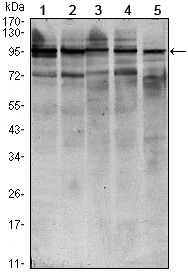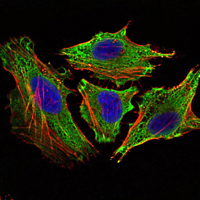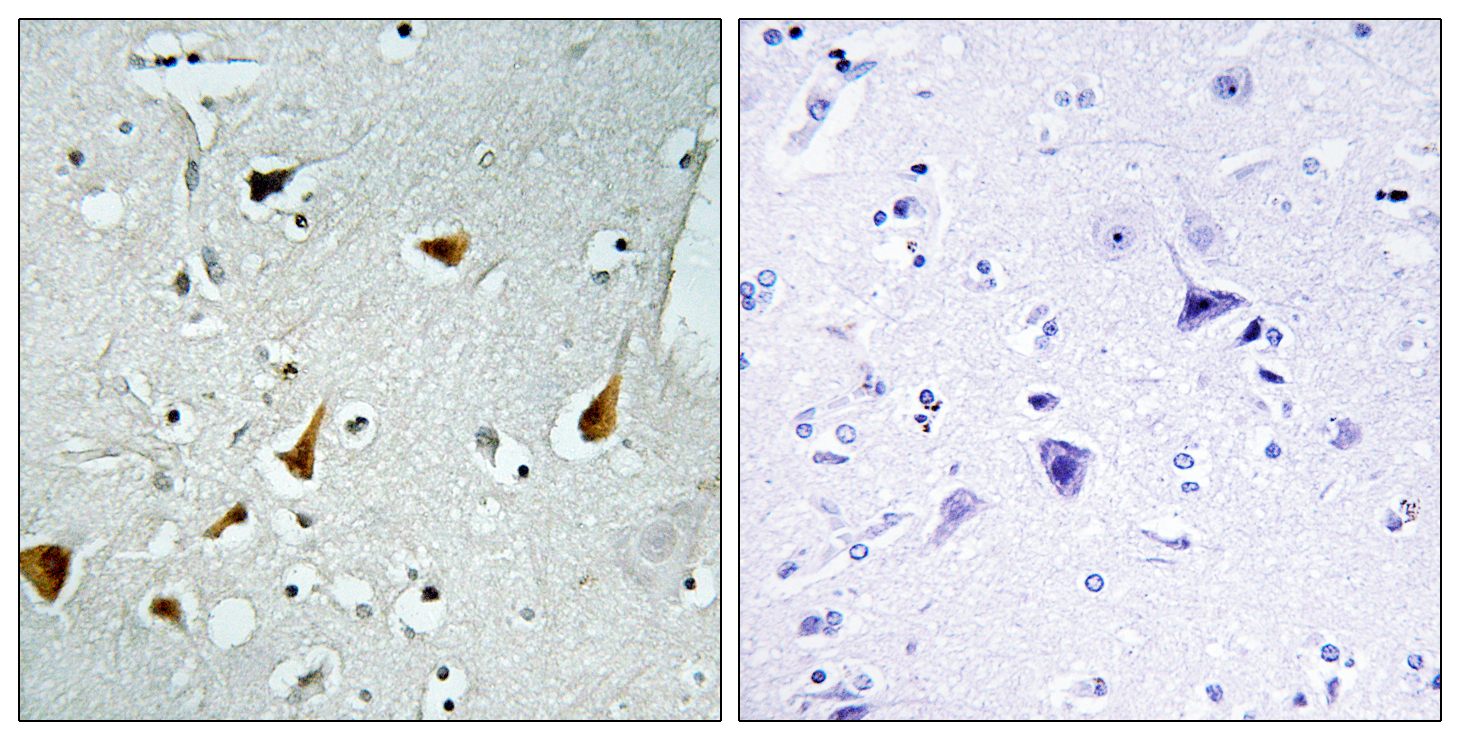Stat6 Monoclonal Antibody
- Catalog No.:YM0600
- Applications:WB;IF;ELISA
- Reactivity:Human;Mouse;Rat;Monkey
- Target:
- Stat6
- Fields:
- >>Necroptosis;>>JAK-STAT signaling pathway;>>Th1 and Th2 cell differentiation;>>Th17 cell differentiation;>>Hepatitis B;>>Pathways in cancer;>>Inflammatory bowel disease
- Gene Name:
- STAT6
- Protein Name:
- Signal transducer and activator of transcription 6
- Human Gene Id:
- 6778
- Human Swiss Prot No:
- P42226
- Mouse Gene Id:
- 20852
- Mouse Swiss Prot No:
- P52633
- Immunogen:
- Purified recombinant fragment of human Stat6 expressed in E. Coli.
- Specificity:
- Stat6 Monoclonal Antibody detects endogenous levels of Stat6 protein.
- Formulation:
- Liquid in PBS containing 50% glycerol, 0.5% BSA and 0.02% sodium azide.
- Source:
- Monoclonal, Mouse
- Dilution:
- WB 1:500 - 1:2000. IF 1:200 - 1:1000. ELISA: 1:10000. Not yet tested in other applications.
- Purification:
- Affinity purification
- Storage Stability:
- -15°C to -25°C/1 year(Do not lower than -25°C)
- Other Name:
- STAT6;Signal transducer and activator of transcription 6;IL-4 Stat
- Molecular Weight(Da):
- 94kD
- References:
- 1. Pediatr Nephrol. 2009 Mar;24(3):489-95.
2. Mol Immunol. 2009 Jun;46(10):2080-9.
3. Am J Hum Genet. 2009 Nov;85(5):628-42.
- Background:
- The protein encoded by this gene is a member of the STAT family of transcription factors. In response to cytokines and growth factors, STAT family members are phosphorylated by the receptor associated kinases, and then form homo- or heterodimers that translocate to the cell nucleus where they act as transcription activators. This protein plays a central role in exerting IL4 mediated biological responses. It is found to induce the expression of BCL2L1/BCL-X(L), which is responsible for the anti-apoptotic activity of IL4. Knockout studies in mice suggested the roles of this gene in differentiation of T helper 2 (Th2) cells, expression of cell surface markers, and class switch of immunoglobulins. Alternative splicing results in multiple transcript variants.[provided by RefSeq, May 2010],
- Function:
- function:Carries out a dual function: signal transduction and activation of transcription. Involved in interleukin-4 signalling.,PTM:Tyrosine phosphorylated following stimulation by IL-4 and IL-3.,similarity:Belongs to the transcription factor STAT family.,similarity:Contains 1 SH2 domain.,subcellular location:Translocated into the nucleus in response to phosphorylation.,subunit:Forms a homodimer or a heterodimer with a related family member (By similarity). Interacts with NCOA1 via its C-terminal LXXLL motif.,
- Subcellular Location:
- Cytoplasm. Nucleus. Translocated into the nucleus in response to phosphorylation.
- Expression:
- Uterus,
- June 19-2018
- WESTERN IMMUNOBLOTTING PROTOCOL
- June 19-2018
- IMMUNOHISTOCHEMISTRY-PARAFFIN PROTOCOL
- June 19-2018
- IMMUNOFLUORESCENCE PROTOCOL
- September 08-2020
- FLOW-CYTOMEYRT-PROTOCOL
- May 20-2022
- Cell-Based ELISA│解您多样本WB检测之困扰
- July 13-2018
- CELL-BASED-ELISA-PROTOCOL-FOR-ACETYL-PROTEIN
- July 13-2018
- CELL-BASED-ELISA-PROTOCOL-FOR-PHOSPHO-PROTEIN
- July 13-2018
- Antibody-FAQs
- Products Images

- Western Blot analysis using Stat6 Monoclonal Antibody against HEK293 (1), NIH/3T3 (2), MCF-7 (3), Raw246.7 (4) and PC-12 (5) cell lysate.

- Immunofluorescence analysis of Hela cells using Stat6 Monoclonal Antibody (green). Blue: DRAQ5 fluorescent DNA dye. Red: Actin filaments have been labeled with Alexa Fluor-555 phalloidin.


